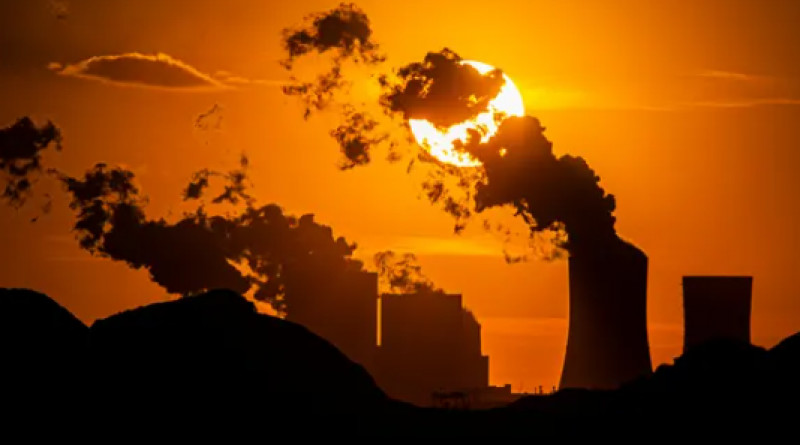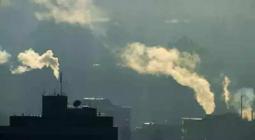CO2 emissions: nations' pledges 'far away' from Paris target, says UN.

Secretary general António Guterres says first assessment of promises amounts to ‘red alert for our planet’.
The first assessment of countries’ pledges to cut their greenhouse gas emissions in the next decade, a vital component of the Paris climate agreement, has found they are only a fraction of the effort needed to avoid climate breakdown.
If all of the national pledges submitted so far were fulfilled, global emissions would be reduced by only 1% by 2030, compared with 2010 levels. Scientists have said a 45% reduction is needed in the next 10 years to keep global heating to no more than 1.5C above pre-industrial levels, in line with the Paris agreement.
Patricia Espinosa, the executive secretary of UN Climate Change, said: “We are very far away from a pathway that will meet the Paris agreement goal. We are collectively walking into a minefield blindfolded. The next step could be disaster.”
The assessment, published by the UN on Friday, covers countries responsible for only about a third of global emissions. Only 75 of the 197 signatories to the Paris accord submitted their national action plans for reducing emissions between now and 2030 – known as nationally determined contributions (NDCs) – in time to be assessed.
Some of the world’s biggest emitters, including China, the US and India, have still to formulate NDCs. They face renewed pressure to do so urgently. The UN has said that without them, the Cop26 climate summit in Glasgow in November will fail.
The UN secretary general, António Guterres, said: “2021 is a make-or-break year to confront the global climate emergency. Today’s interim report is a red alert for our planet. It shows governments are nowhere close to the level of ambition needed to meet the goals of the Paris agreement. The major emitters must step up with much more ambitious reduction targets for 2030 in their NDCs well before the November conference in Glasgow.”
Many of the countries still to produce NDCs, including China and the US, have stated their intention to reach net-zero emissions by 2050, seen as a key commitment to fulfil the Paris agreement. Guterres, however, said 2030 targets were also crucial: “Covid-19 recovery plans offer the opportunity to build back greener and cleaner. Long-term commitments must be matched by immediate actions to launch the decade of transformation that people and planet so desperately need.”
The US and China will now be firmly under the spotlight. China could publish its NDC as soon as next week, when the government is expected to unveil its next five-year plan. The US is holding a major international climate summit on 22 April, at which it could come forward with plans.
The two biggest emitters are involved in a diplomatic balancing act, echoing that before the Paris agreement, when presidents Barack Obama and Xi Jinping held their own summit before the talks in the French capital to forge a common understanding.
Helen Mountford, the vice-president of the World Resources Institute, called for stringent plans from both. “The US should set an ambitious and attainable 2030 emission reduction target of 50%, while China should peak its emissions by 2025, which our research shows is possible, as well as rein in its non-CO2 emissions” such as methane and industrial gases.
Aubrey Webson, the ambassador to the UN for Antigua and Barbuda and chair of the Alliance of Small Island States, many of which face inundation if temperatures rise by more than 1.5C, said: “The US recently rejoined the Paris agreement and the world applauded. Now we need them to continue to showcase real climate leadership.
“Other large emitters that have not yet made pledges must do so immediately. If we are truly determined to limit global warming to well below 1.5C, these emitters must do better. They must go further. And they must implement their climate targets faster.”
Espinosa also made it clear that the countries that had already submitted their pledges had not done enough. She refused to single any out, and the assessment – entitled the Initial NDC Synthesis Report – shows aggregate data. She said: “It is incredible to think that just when nations are facing an emergency that could eventually end human life on this planet, many are sticking to their business-as-usual approach.”
Japan submitted its NDC early last year, but since then the country’s new government and regional rivals China and South Korea have committed to net-zero targets, which could prompt a rethink. Australia and Brazil also submitted NDCs widely regarded as inadequate. EU member states agreed a target of 55% emissions cuts by 2030, compared with 1990 levels, though MEPs wanted to go further.
The UK, which will host Cop26, claimed its target of 68% emissions reductions by 2030 was the toughest of any developed country, but some economists calculated a target of 70% or more was feasible.
Carolina Schmidt, Chile’s environment minister who hosted the last Cop talks in 2019, said that of the major economies only the EU and UK had pledged enough. “With respect to the world’s biggest emitters, whose contributions are most decisive, only two followed Chile’s footsteps by presenting NDCs with a strong increase in greenhouse gas reduction targets last year,” she said.
“These were the EU and UK, whose efforts we commend. The remainder have either failed to present new NDCs or presented NDCs with no increase in ambition. They must all now step up if we are to keep the hopes of Paris alive, even if this means resubmitting an NDC to ensure it is fit for that task.”
26 February 2021
The Guardian





